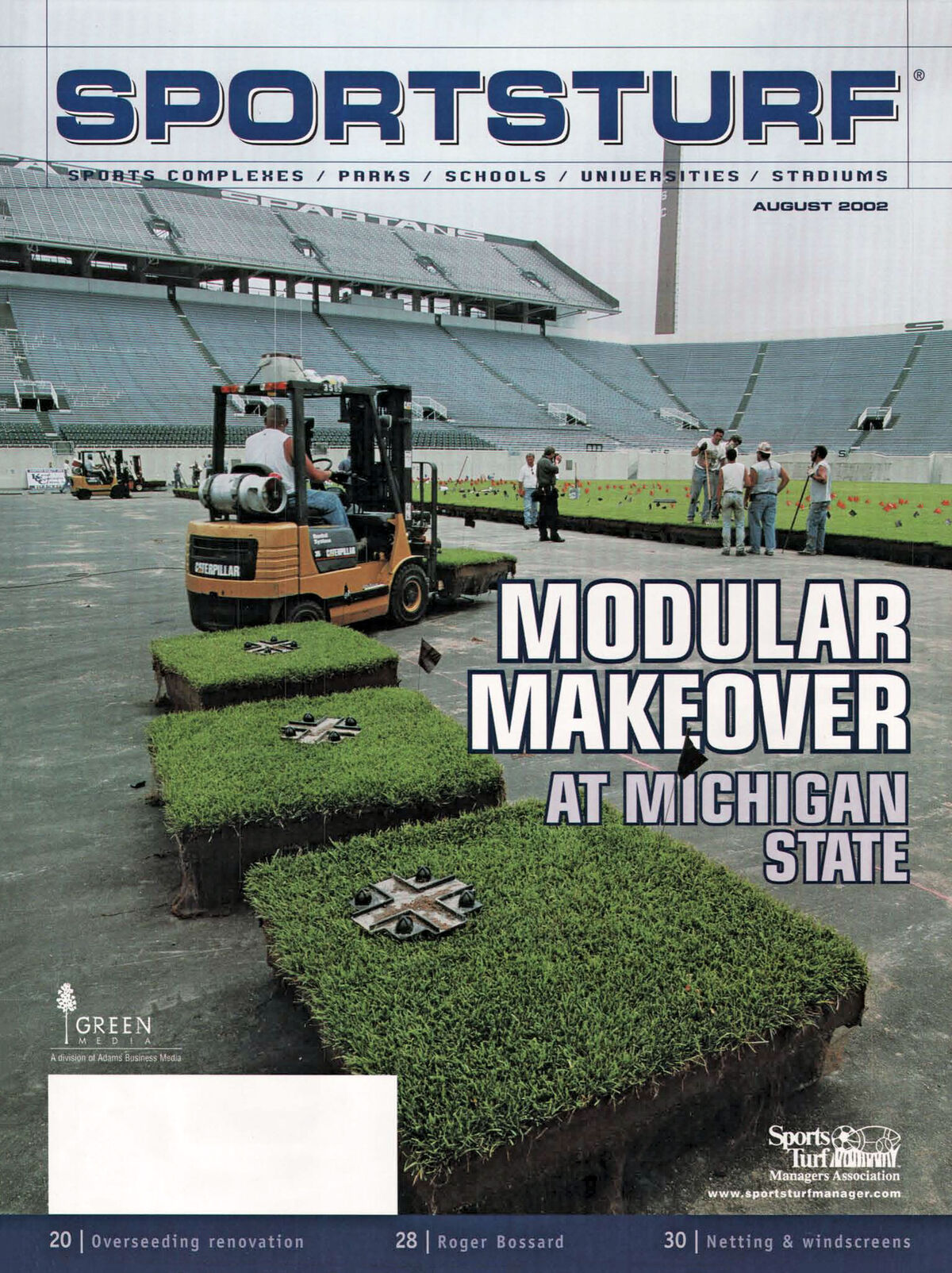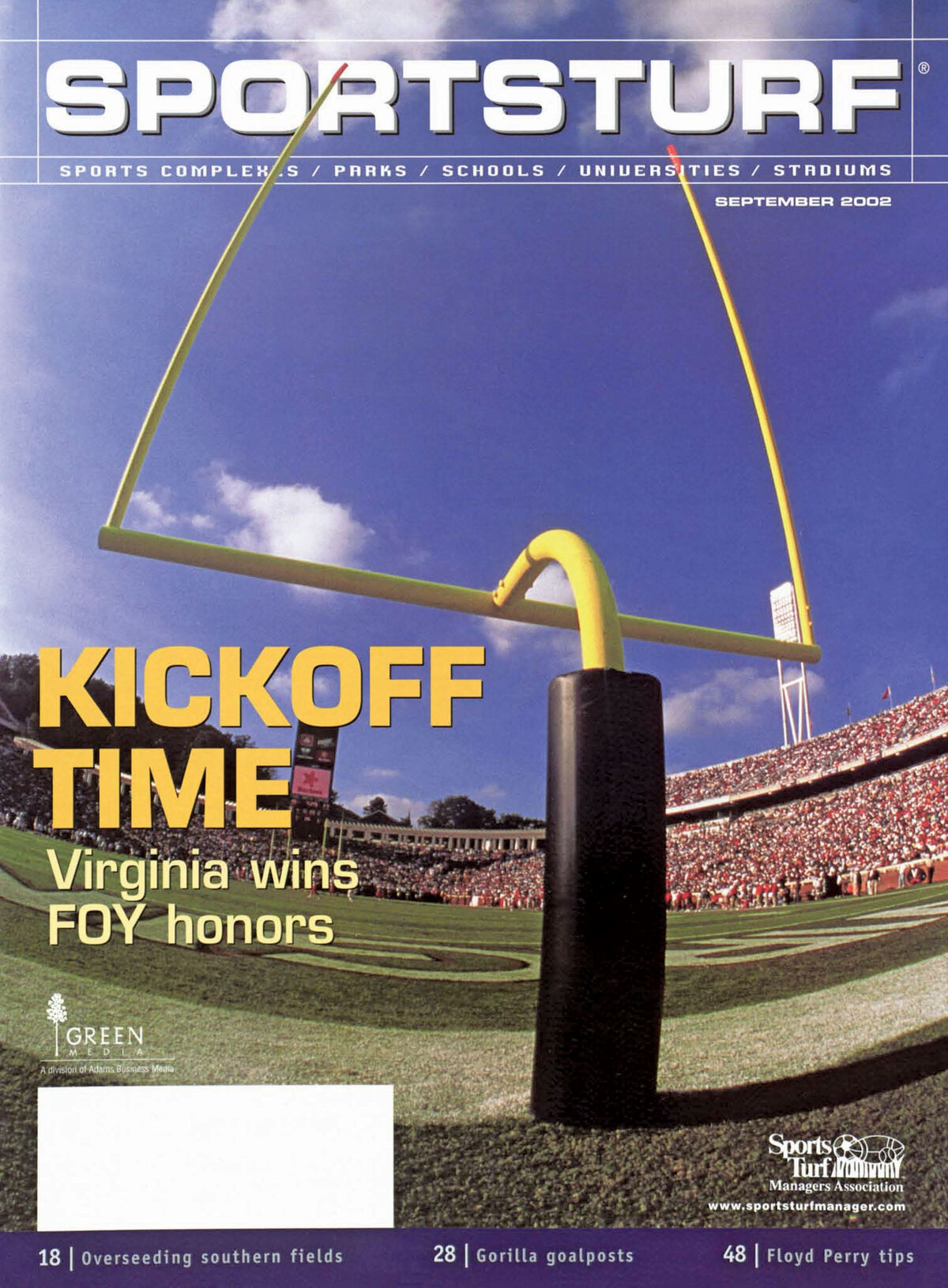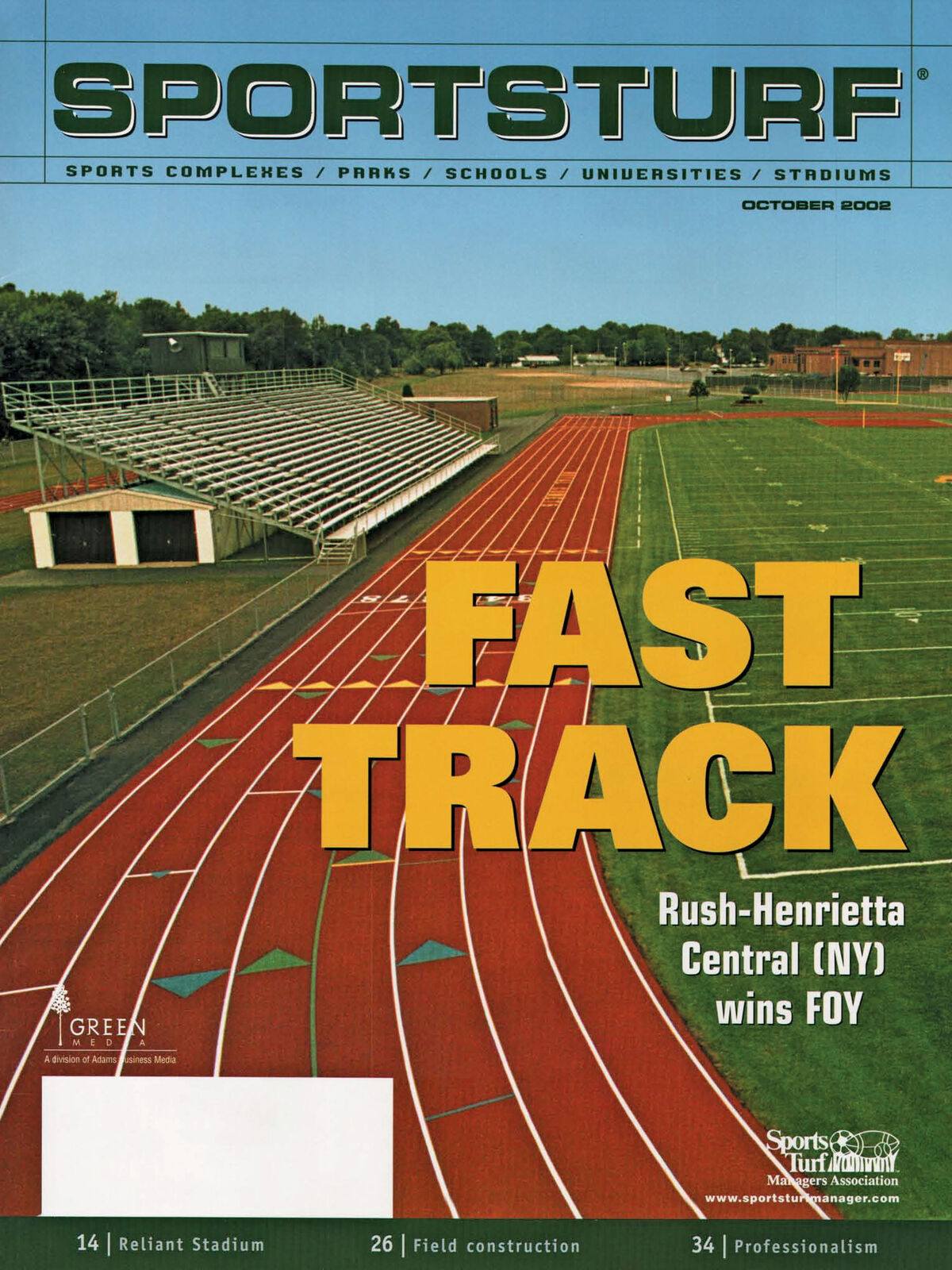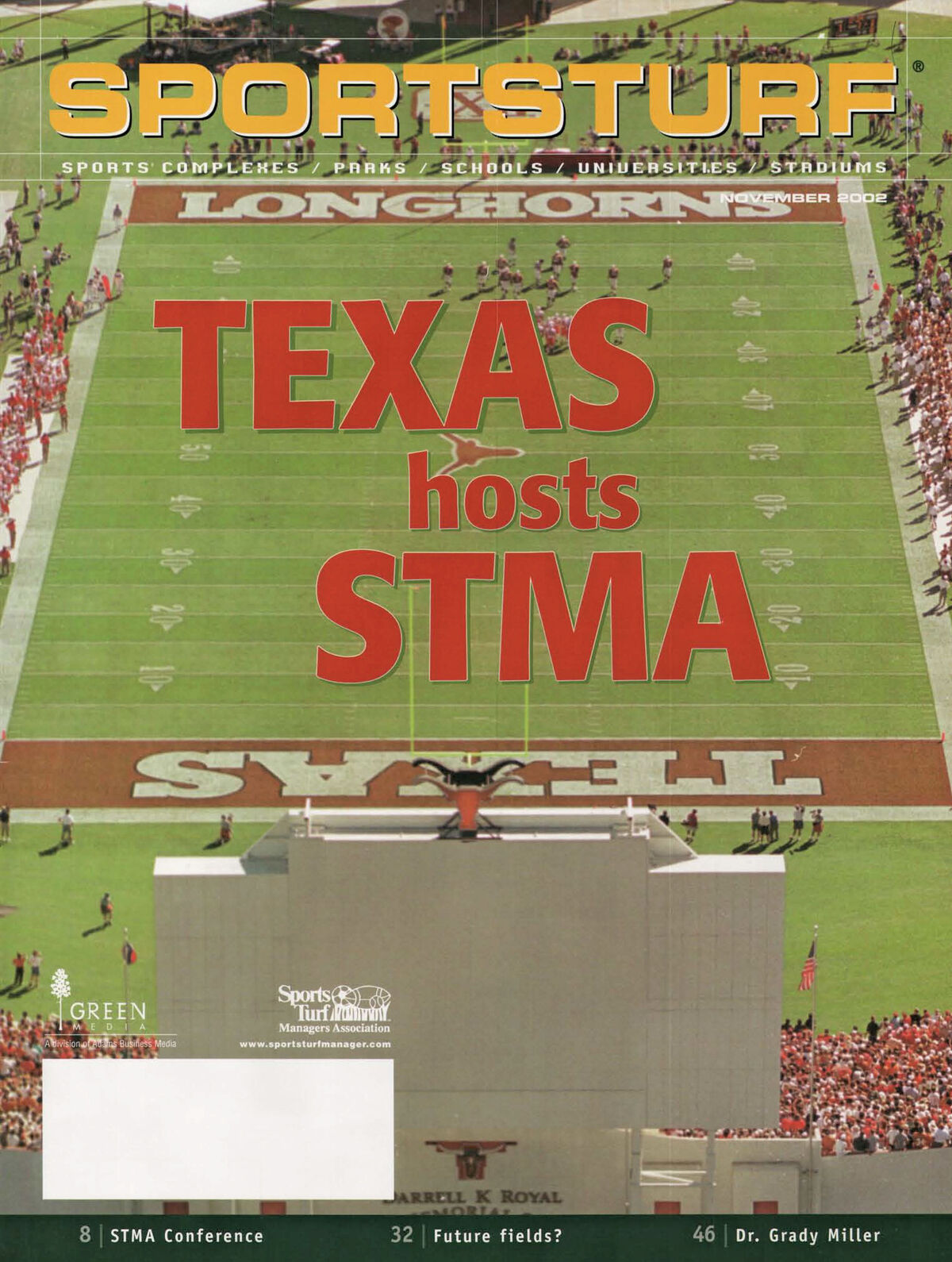2002
This retrospective delves into the historic issues of SportsTurf magazine, predecessor to SportsField Management magazine. For this edition of Accessing the Archives we turn the clock back to 2002.
The January 2002 issue showcased Bank One Ballpark, home of the Arizona Diamondbacks, and how head groundskeeper Grent Trenbeath and his team managed natural grass in a retracta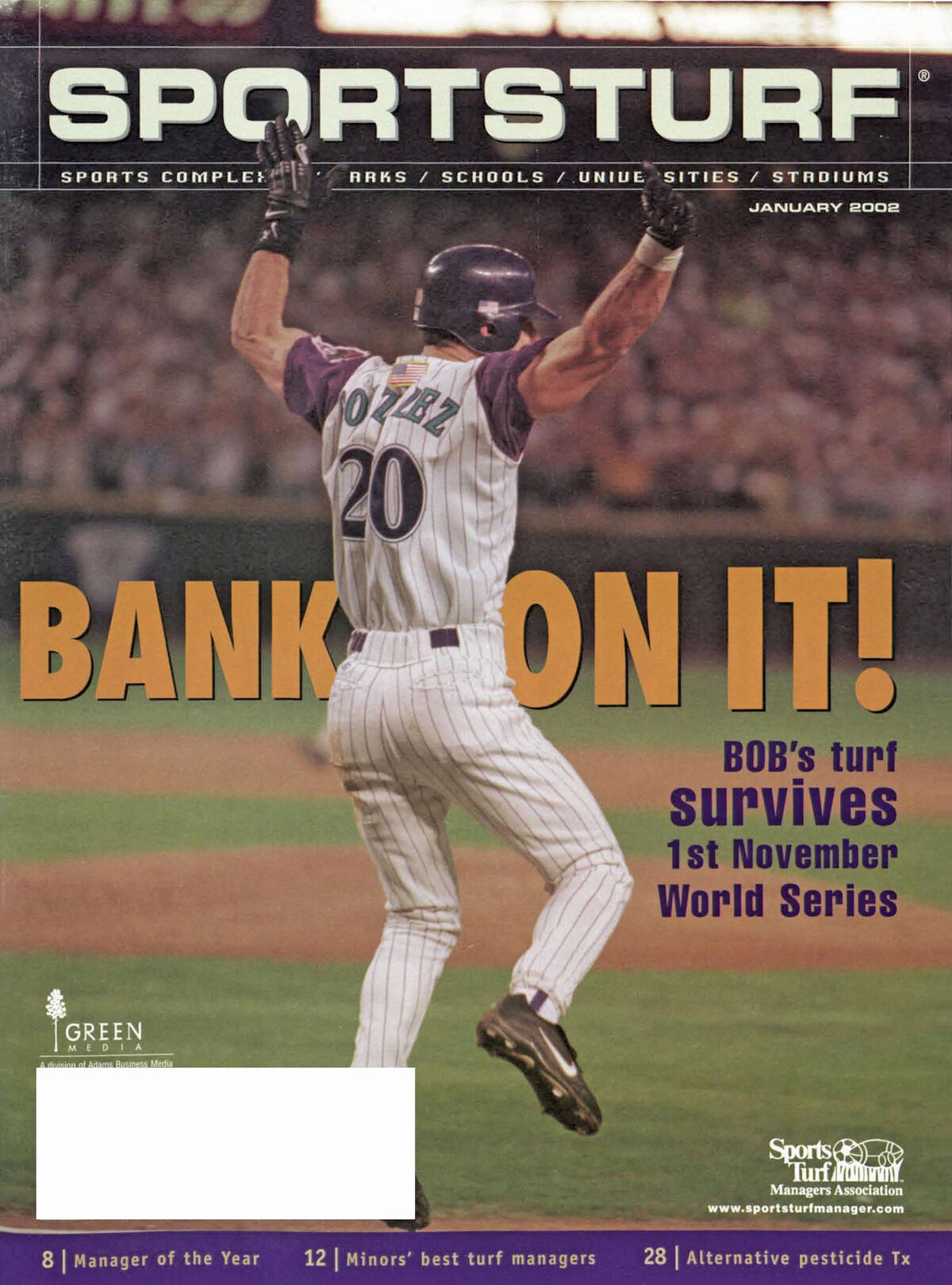
“We’d done the preparation, and the year had been our field’s best,” said Trenbeath. “It looked great and played great. So, in the bottom of the ninth, Gonzo drives home the game-winning run. The fans go nuts, and I run out on my field for a huge celebration. It was tremendous.”
Dr. Tony Koski, who was chosen as the SportsTurf 2002 Manager of the Year, was also profiled in the January issue. Koski was selected by the previous winners of the award, and was recognized for his leadership in the industry and his willingness to educate others. He also served on the SAFE Foundation Board and was responsible for developing the criteria for research grants.
The cover story of the February 2002 issue was the Dell Diamond of Round Rock, Texas, winning Profess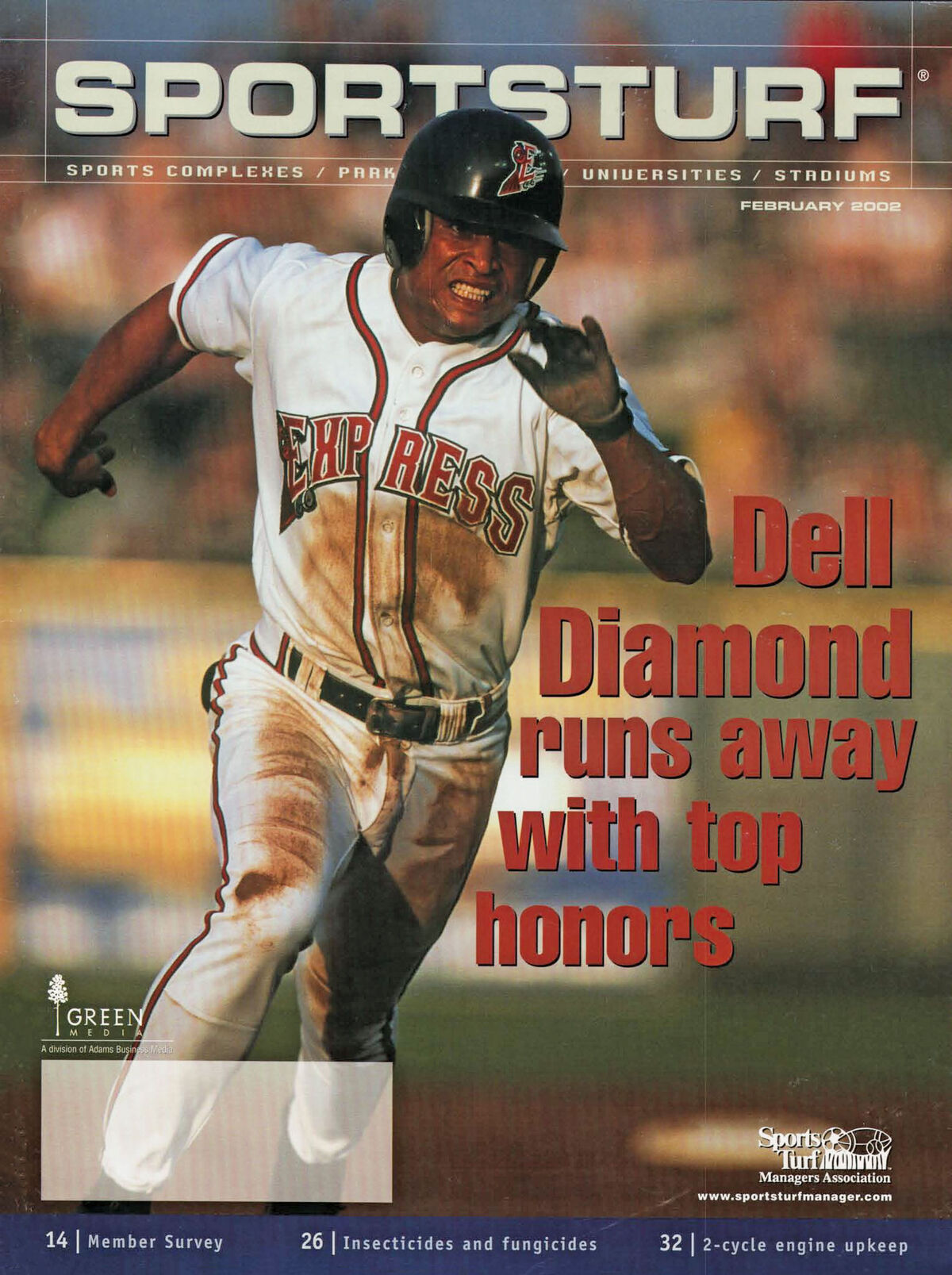
Experts sharing insight into infield maintenance was the focus of the March 2002 cover story, “Mix Mast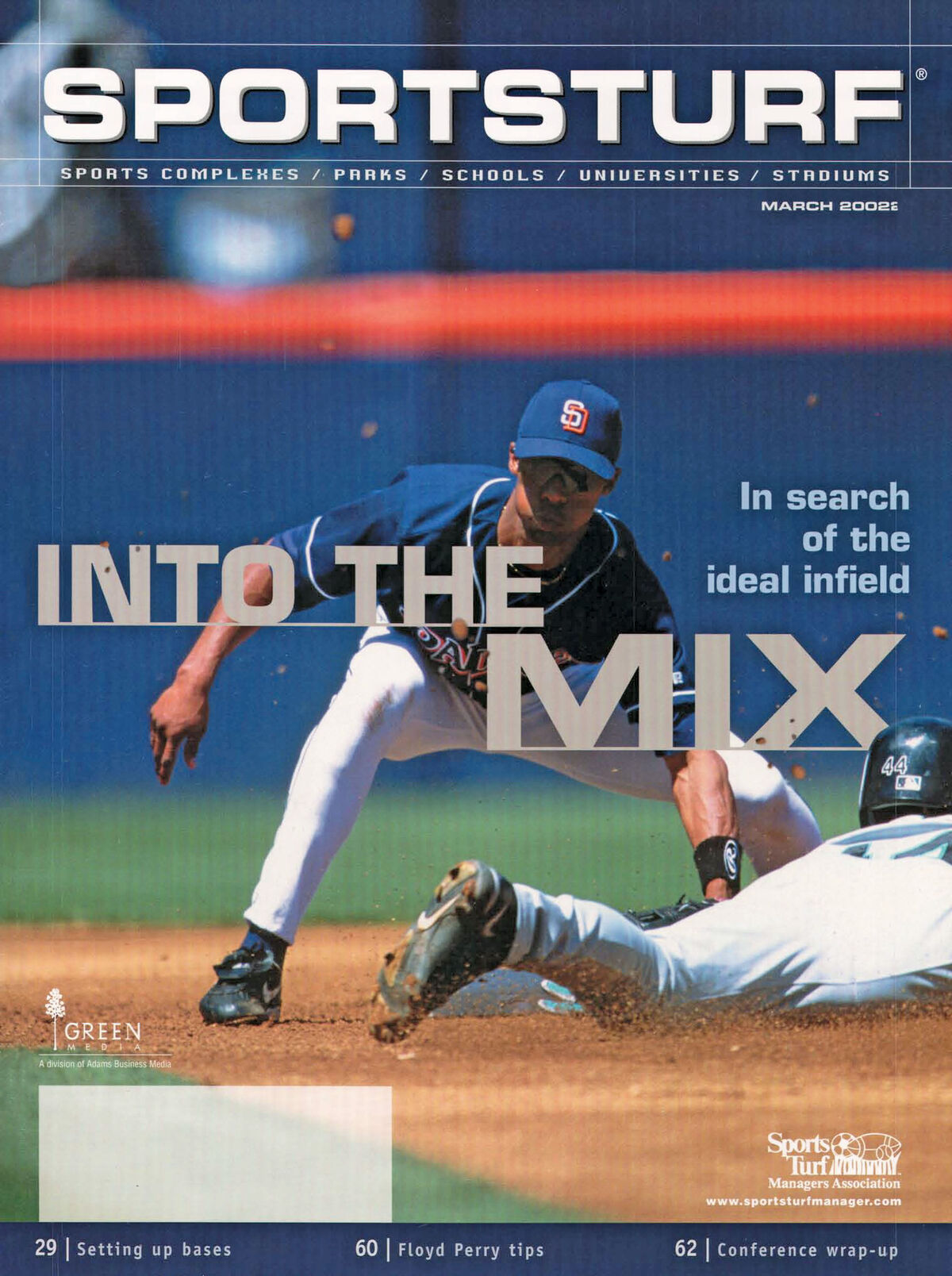
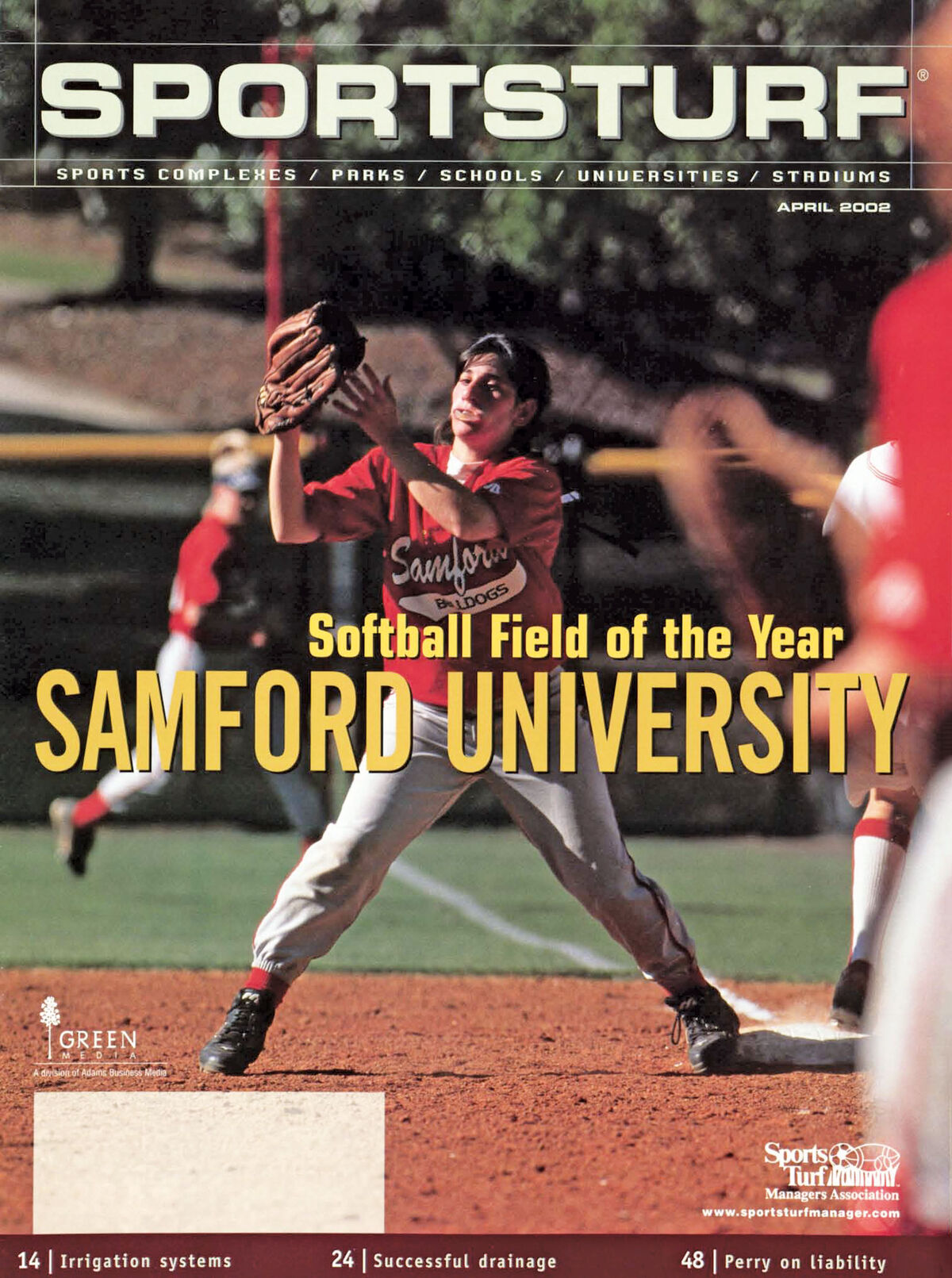
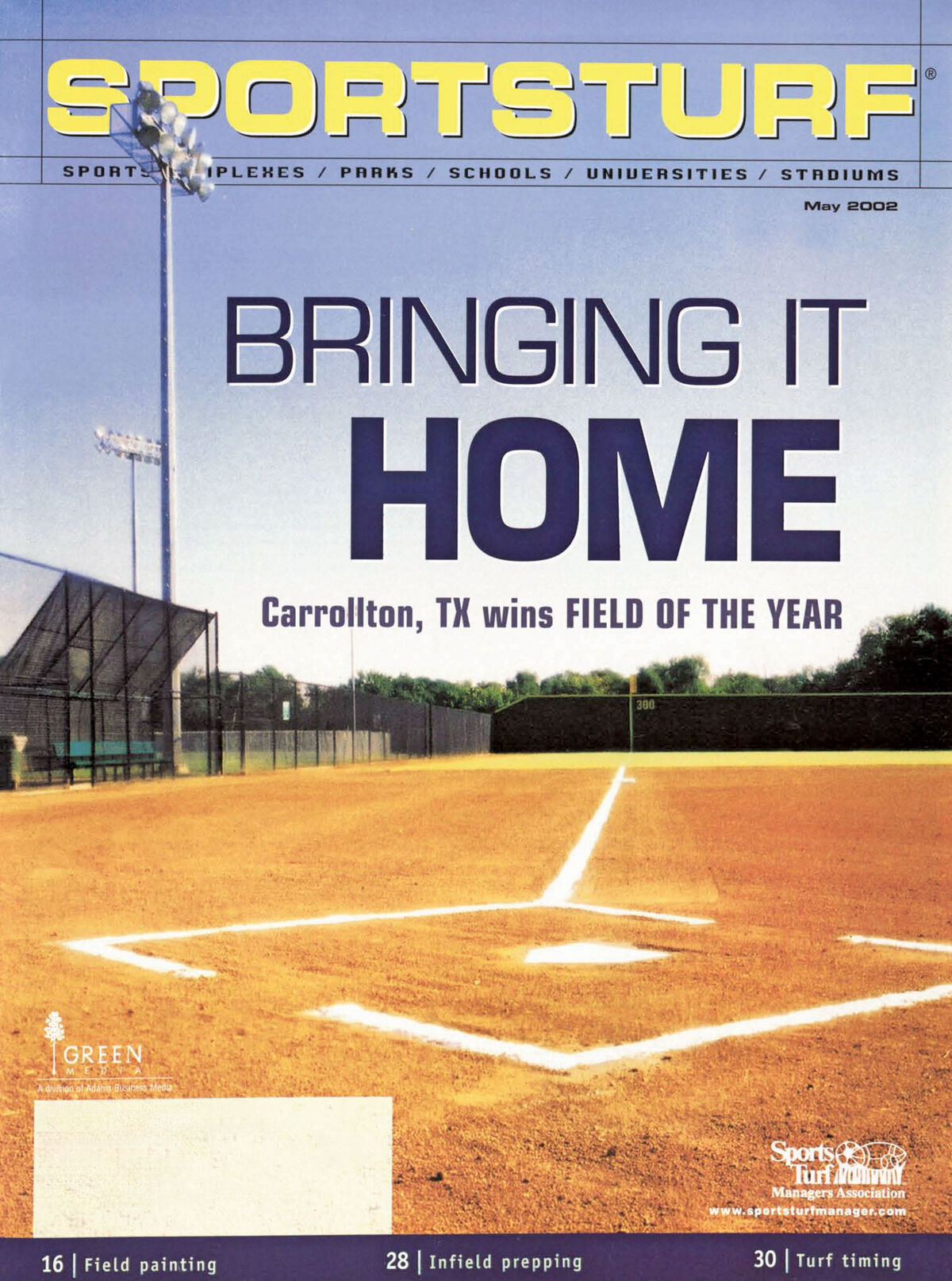
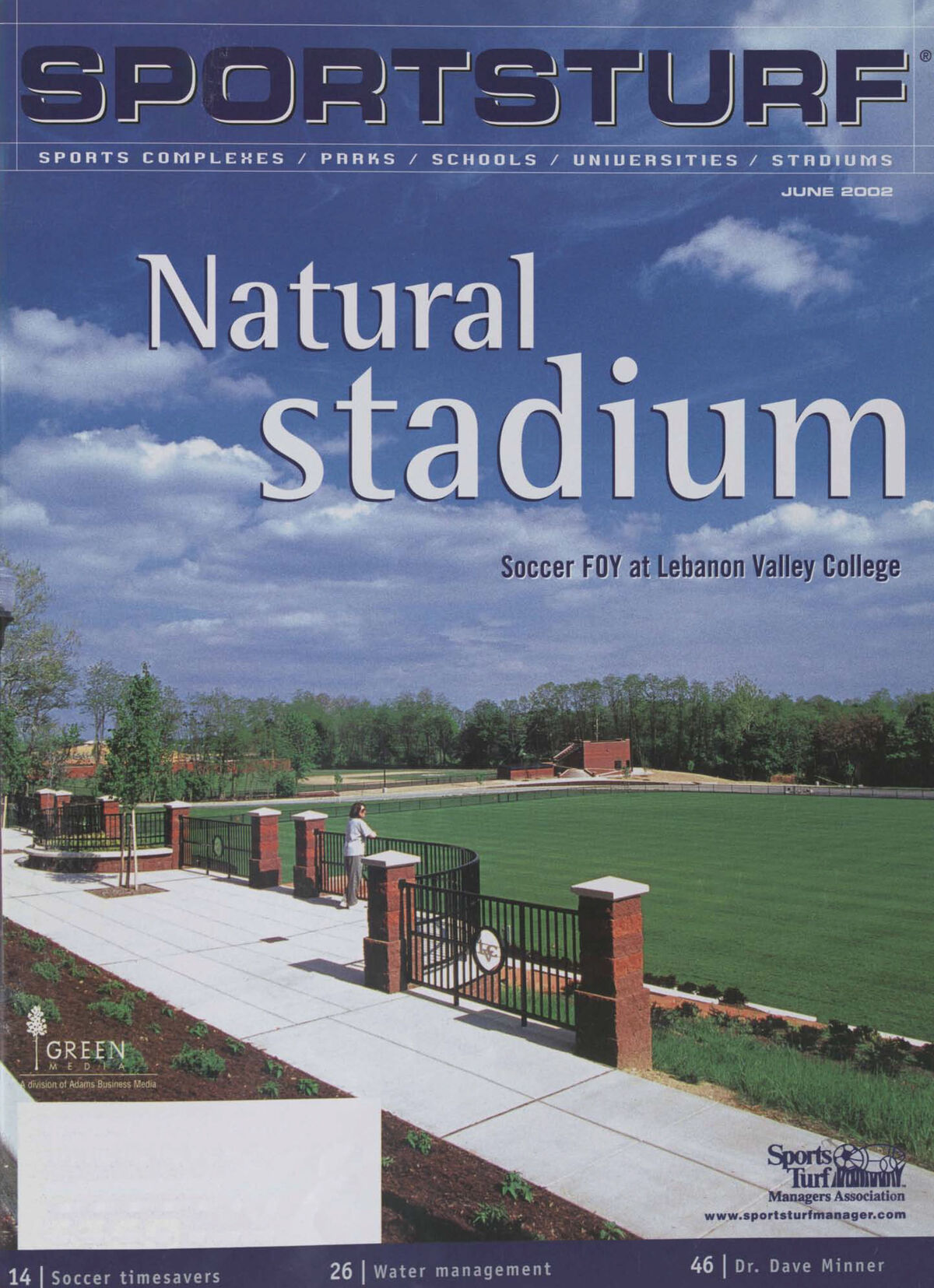
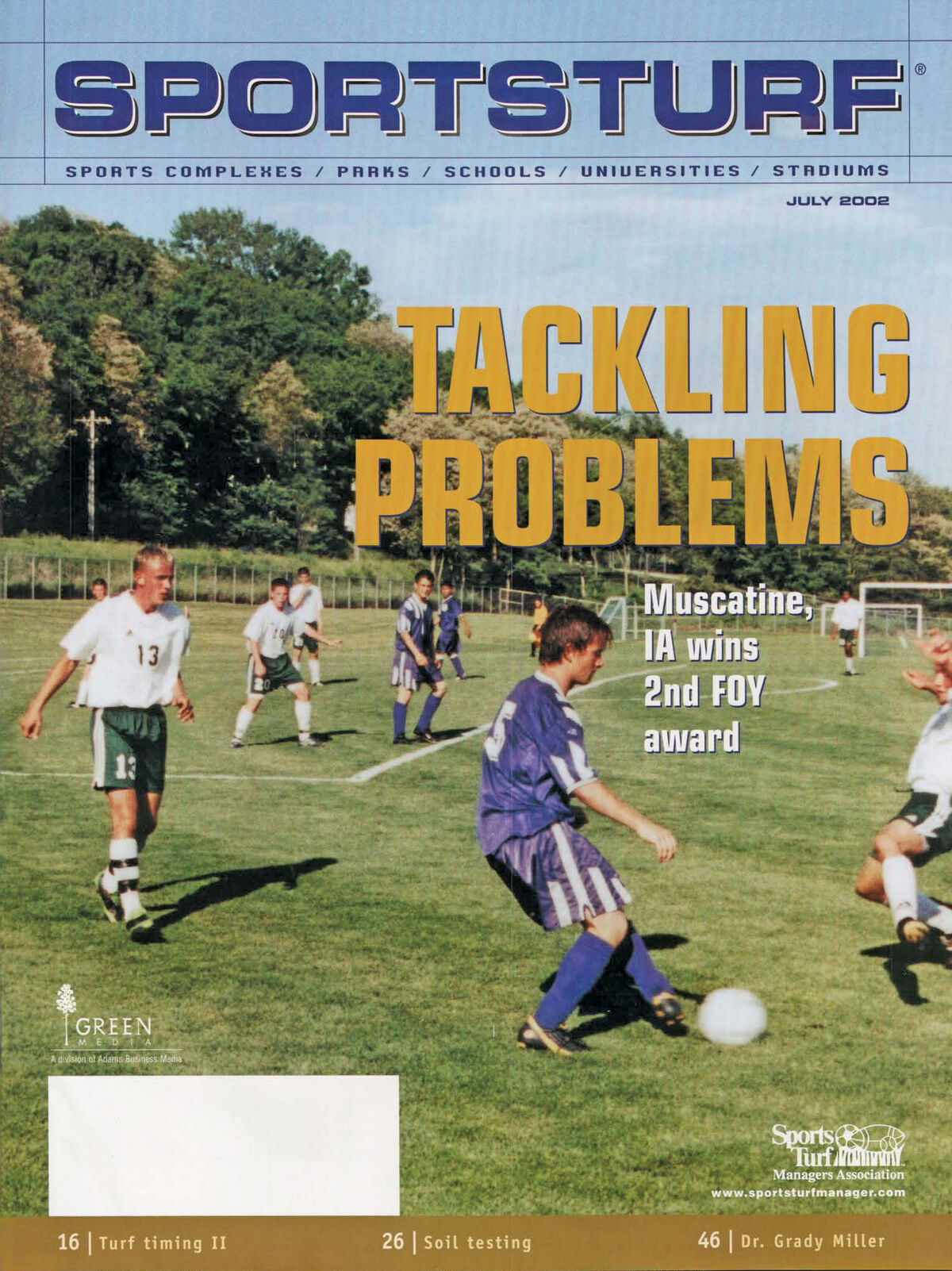
The July issue covered the Schools and Parks Soccer Field of the Year — Muscatine Soccer Complex, analyzing soil- and sand-based fields, the Chicago Bears training camp fields at Olivet Nazarene University, field maintenance checklists, and more.
The “modular makeover of Michigan State” was the cover story for August SportsTurf. For the first time in 33 years, college football would be played on a natural grass surface at MSU’s Spartan Stadium. That was thanks to a system of 4,800 GreenTech ITM modules measuring 46 inches square each. Each module weighed 1,300 pounds and was brought into the stadium via forklift. They were then reassembled in the same order in which they were grown over the prior year at the Hancock Turf Research Center so that the edges and seams would fit tightly together.
In the September 2002 issue of SportsTurf, legendary Chicago White Sox Groundskeeper, Roger Bossard (aka, “The Sodfather”), shared his insights regarding sports field projects. “There are two main factors in the success of any sports field project. First is that the right decisions are made during construction. Second, that it is properly cared for and maintained. Building and maintenance is really a partnership. Sports field builder and groundskeeper work hand in hand. Either you both look good or you don’t.”
Bossard added that three considerations for any project are, 1) Never forget the purpose of the field — athletics; 2) Common sense goes a long way in designing a field; and 3) The original design concept must not only keep the construction budget in mind, but the maintenance budget as well.
The expansion Houston Texans; their new home, Reliant Stadium; and their new head groundskeeper, Jon Strantz, were profiled in the October 2002 issue of SportsTurf. Reliant Stadium opted for a palletized turf system (StrathAyr). The entire module was only 7-1/2 inches tall including the metal drainage base, which consisted of nine honeycombed drain cell inserts. “After the first scrimmage here, the players liked it a lot. It’s definitely a fast surface,” said Strantz. “It turned out really nice.”
The November 2002 issue previewed the 2003 STMA Conference in Texas, while the December issue wrapped up the year with a story about a high school field going from groundbreaking to game day in 83 days, as well as an article about the turf conditioning system at Gillette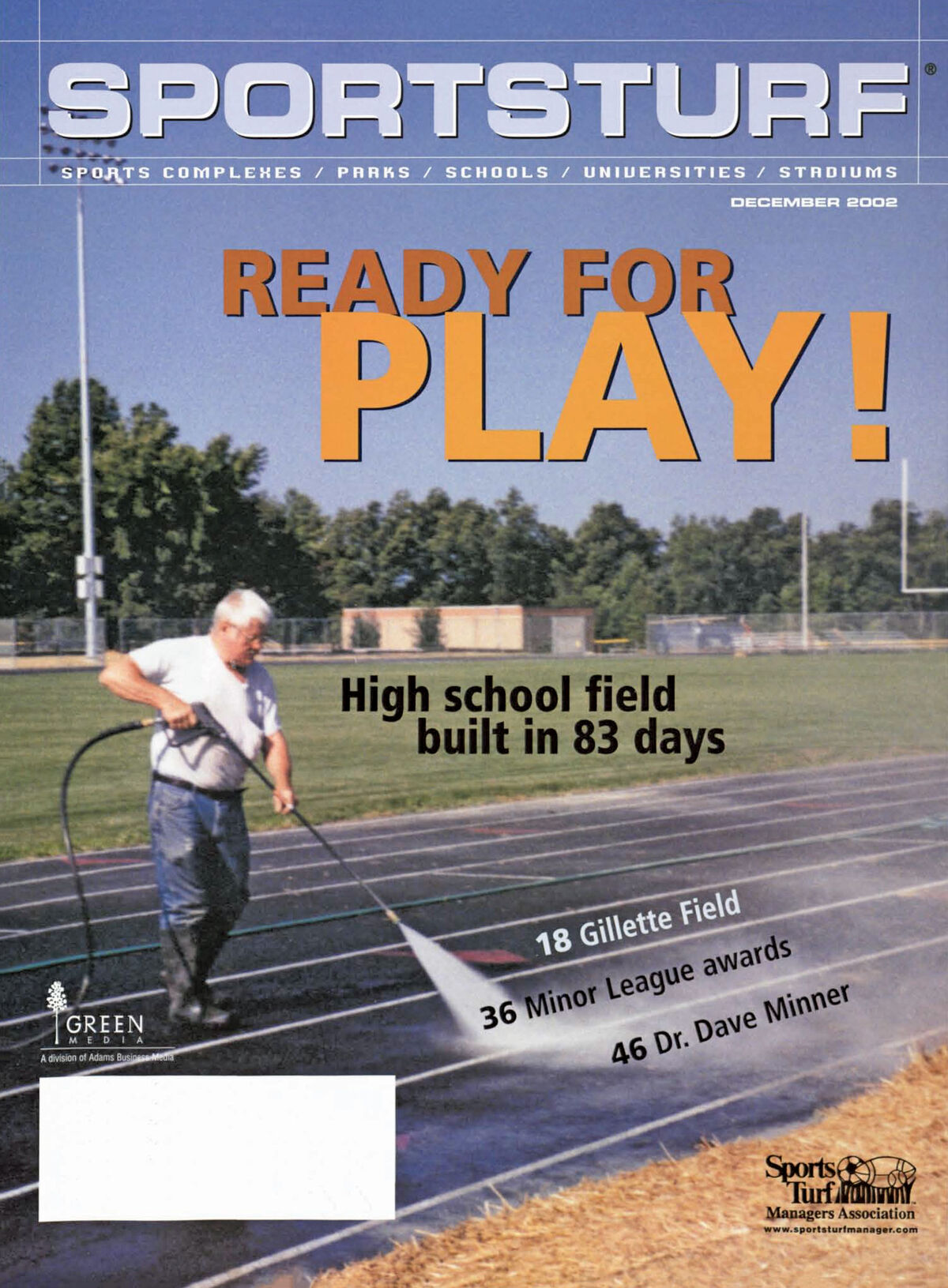
Overall, SportsTurf magazine in 2002 continued it’s product tabloid format with a heavy emphasis on equipment and supplies, but also had some great guest contributors and a nice variety of in-depth articles on some interesting projects and topics.
All content for this section is pulled from the SportsTurf/SportsField Management archives, an ongoing cooperative project of EPG Media, SFMA and the Michigan State University Libraries. Public access to the archive from 1985 to the present (less two months) is available at https://sturf.lib.msu.edu/index.html.
